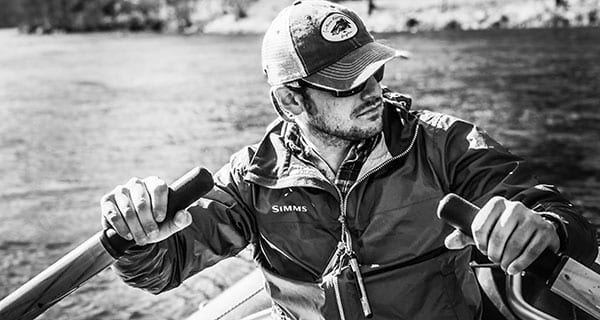I think one of the more compelling parts of the human condition is how willing we are to try and limit ourselves, especially when it comes to skill related endeavors like fly fishing. Aside from being good conversation starters when sharing lies and drinks with your buddies, questions like, “If you could only have one fly rod/ fish one river/ pick one fly”, actually present unique opportunities to better ourselves as anglers, if we allow it to do so. Particularly when it comes to the endless supply of fly patterns that are on the market today. Too many anglers, especially beginners, will attribute the leading cause of their success to the fly pattern more so than their own skill. I will argue to the day I pass on to glory that the only “fly” a fly angler needs is a good presentation.
With that being said, I would be lying if I didn’t have flies that I have an endearing amount of confidence in. Instead of trying to narrow it down to just one… I’m going to pick my top three fly patterns for trout broken down into my favorite dry fly, nymph, and streamer pattern that I wouldn’t be caught fishing without anywhere in the Southern Appalachians.
Dry Fly – Parachute Adams: Ever since I was a kid, I was always drawn to the fish catching simplicity that comes from a standard Parachute Adams. This one fly pattern has probably resulted in over 80% of the trout I’ve ever caught on a dry fly in my entire lifetime. The beauty behind the platform of a Parachute Adams is that it can look like a whole myriad of different aquatic and terrestrial insects just by switching up the size, and color. While originally intended to imitate the profile of a mayfly sitting in the surface film: I’ve personally used this fly with great success in the middle of midge and caddisfly hatches on tailwaters and finicky freestone streams like the Davidson. If you add rubber legs and darken the color scheme, you have an instant beetle/ ant imitation for the summer. It’s as close to a “perfect” dry fly as I could ever think to have in my box.
Nymph – Pheasant Tail: Like a Parachute Adams, the pheasant tail has this base platform that can be modified in seemingly endless ways to throw off the profile of anything in a trout’s diet. I’ve thrown giant size 8 pheasant tails with rubber legs in muddy water to imitate golden stonefly nymphs, and also one’s as small as size 20-22 to pick off selective tailwater trout during a midge hatch. Since its inception by Frank Sawyer, the pheasant tail has probably landed more trout than any other fly in existence.
Streamer – Muddler Minnow: This is where I’ve probably thrown a curveball for some people by not picking a generic “wooly bugger” style streamer. The Muddler Minnow, while an old pattern, can be tied in a myriad of ways that can entice different desired actions into the fly on the retrieve. The original, tightly packed deer hair head is a deadly fly pattern when fished either on an intermediate or full sink fly line. When tied and fished correctly, it gives off an erratic action that is very similar to a conventional jerkbait. Throwing dumbbell eyes onto the head for weight can also give the fly a jigging action that can be very effective when using contact styles of nymphing close quarters. The overall profile of the fly itself, and the wide variety of ways it can be fished, offer the angler almost endless possibilities on how to fish it.
I find that the one key factor that I can attribute to my choices in fly patterns is that I have confidence in them to put fish in the net regardless of where I am at in the mountains. Having the confidence in not just the fly, but also yourself and your abilities as an angler will result in more productive days on the water.
Ethan Hollifield is a member of a conservation organization called 2% For Conservation and a guide for Southern Appalachian Anglers.
